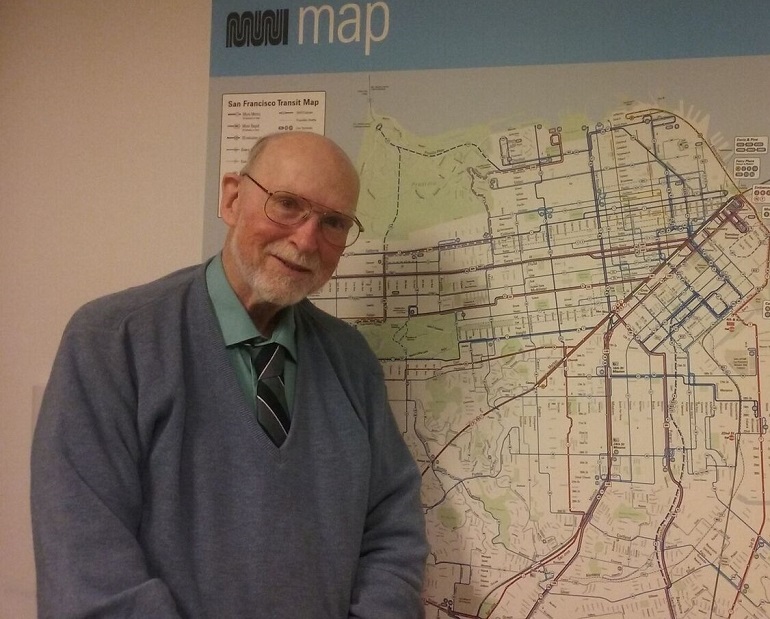If there’s one thing Muni excels at, it’s connecting people to destinations where they can have fun.
Take it from “The Travelin’ Grampa,” who says he’s ridden transit in every major metropolitan area in the United States in all but about six states.
“You can get to the museums here, the parks, the aquarium, the Planetarium, the theaters, shopping,” he said. “This is a sightseer's paradise.”
John Moore, the 83-year-old author of The Travelin’ Grampa magazine, shared some thoughts on transit with the SFMTA during his latest visit to the Bay Area this week.
A retired journalist who lives in Philadelphia, Moore has chronicled his experiences and tips on riding public transit around the country for the past nine years. His magazine, distributed only by print publication and email, is focused on the perspectives from seniors and people with disabilities - whether they ride transit or not.
For Moore, there’s no better way to get to know a city than by getting around on transit - and it can be faster than driving.
But it can be hard to find seniors who share his enthusiasm about riding transit, or ride it at all, Moore said. Across America, he said many seniors seem to hold outdated, negative perceptions about transit because they haven’t ridden it in decades.
“In city after city I go to, everybody thinks the system is more lousy than it is,” said Moore. “The last time these people have ridden on a train, it had a steam engine pulling it. The last time they rode a bus, it was a school bus. The last time they rode on a streetcar, it had wooden benches,” much like Muni’s historic streetcars built in the early 20th century.
Many American seniors seem to believe transit is “dirty, inconvenient, slow and expensive,” he said. “Most of that stuff is nonsense.”
Of course, there are often real challenges in riding transit, especially for seniors and people with disabilities. The most common complaint he hears of (and shares) is about a lack of convenient connections between transit routes and systems.
“I get off the train, and my bus is pulling away and the next one doesn’t come for half an hour,” he said. “Or I get off the bus and the bus I have to catch is across eight lanes of highway.”
In the Bay Area, transferring between numerous transit systems is a matter of course. But our region’s transit connectivity ranks generally high for Moore, who lauded transit hubs like San Francisco’s shared Muni Metro and BART stations, the speed of Amtrak’s Capitol Corridor and projects in the works like the Transbay Transit Center.
“The Clipper Card’s a godsend,” he said.
While the top spots on Moore’s list for most convenient transit systems are filled by New York City, Boston and Washington, D.C., “Generally, everything I’ve ridden on in the Bay Area has been excellent. And the gem, the keystone is really San Francisco. Muni is really terrific.”
Transit systems across the country have been challenged in recent years by dwindling state and federal transit funds to maintain and replace vehicles and infrastructure. Moore has noticed the impact during his travels: Transit agencies “need new equipment. They need some capital expenditures.”
Muni’s funding outlook has improved recently with the passage of a local bond measure and other critical funds, but the need to replace Muni’s well-worn vehicles is perhaps most evident on its aging fleet of electric trolley buses. That hasn’t seemed to faze Moore, who gave special praise to the trolleys’ comfortable and quiet ride.
“Riding on those is really unmatched,” he said.
